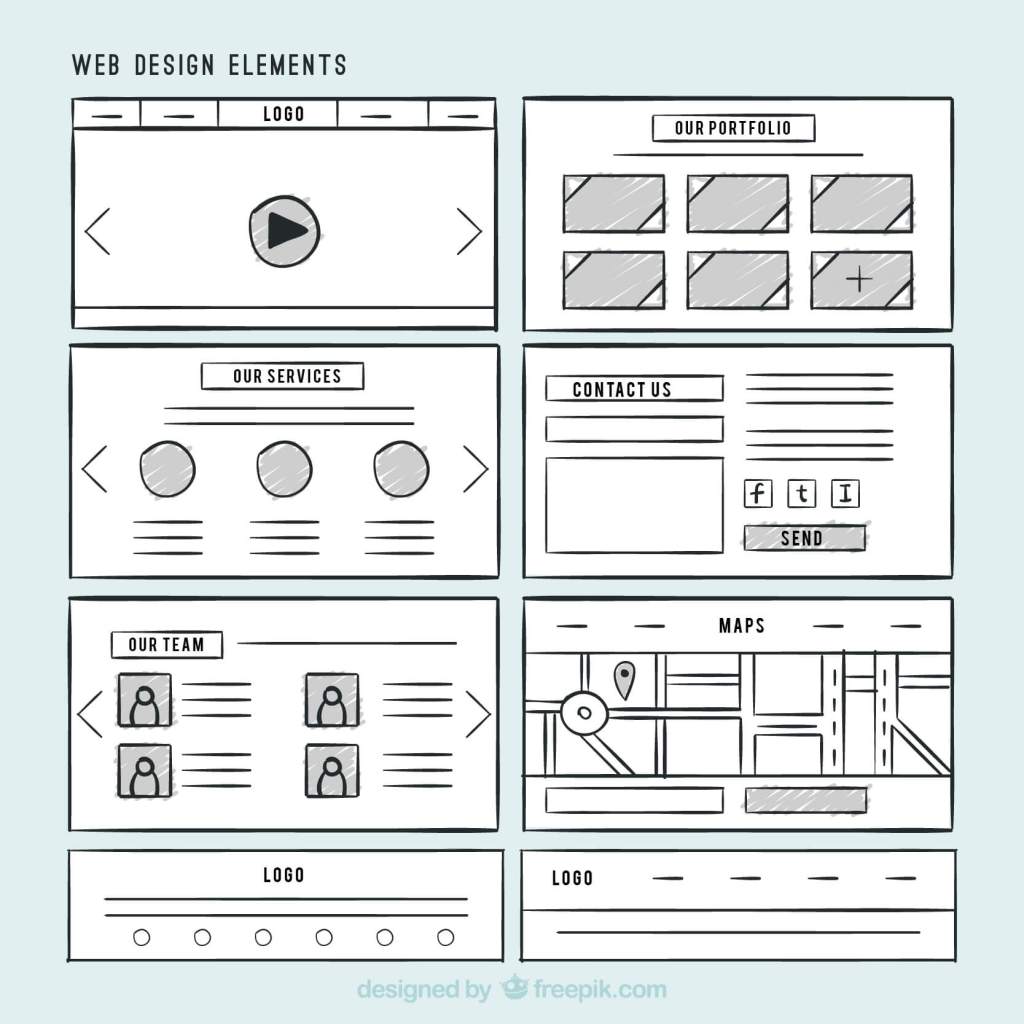What are Wireframes
Wireframes are simplified, black-and-white illustrations that outline the skeletal framework of a website or application. Think of wireframes as the architect's blueprints for a building, providing a clear visual guide to how elements will be arranged and how the user will interact with them. They focus on:
- Structure: The overall layout and organization of elements.
- Content Placement: Areas dedicated to text, images, buttons, forms, and other content.
- Navigation: How users will move through the site or application.
Importance of Wireframes in the Design Process
Wireframes play a crucial role in the early stages of web development for several reasons:
Clarity and Communication
- Stakeholder Alignment: Wireframes help communicate ideas clearly to stakeholders, ensuring everyone is on the same page before moving forward with high-fidelity designs.
- Team Collaboration: Designers, developers, and content creators can use wireframes as a reference, fostering better collaboration and reducing miscommunication.
Focus on User Experience
- User-Centric Design: By prioritizing usability and functionality, wireframes ensure that the user experience is thoughtfully considered and effectively integrated into the layout.
- Feedback Iterations: Early feedback on wireframes can be gathered and incorporated, allowing for iterative improvements without significant investment in design and development.
Efficiency and Cost-Effectiveness
- Rapid Prototyping: Creating wireframes is quicker and less costly than high-fidelity designs, facilitating rapid prototyping and testing.
- Error Identification: Wireframes help identify potential issues or gaps in the structure and navigation early on, avoiding costly changes later in the development process.
Types of Wireframes
Wireframes can vary in fidelity, from low to high, depending on the level of detail they contain and the stage of the design process:

Low-Fidelity Wireframes
- Basic Sketches: Simple, rough sketches often created with pen and paper or basic digital tools.
- Minimal Details: Focus on broad layout and placement of elements without concerning specific details.
Mid-Fidelity Wireframes
- Grayscale Designs: More refined digital versions using grayscale colors to distinguish different elements.
- Detail Enhancement: Include more UI elements like buttons, forms, and specific content areas without focusing on final design details.
High-Fidelity Wireframes
- Interactive Prototypes: Detailed and clickable prototypes that simulate user interactions and navigation.
- Close to Final Design: High fidelity wireframes are more polished, showing precise placements, but still without full color schemes, fonts, or images.
Best Practices for Creating Effective Wireframes
Creating wireframes involves strategic thinking to balance functionality and user experience effectively. Here are some best practices to ensure your wireframes serve their purpose well:
Understand User Needs
- User Personas: Develop user personas to identify and understand the target audience's needs, preferences, and behaviors.
- User Scenarios: Consider various user scenarios and journeys through the site to ensure smooth navigation and interaction.
Simplify and Focus on Functionality
- Prioritize Essentials: Focus on essential elements first, avoiding unnecessary details that can clutter the wireframe and distract from core functionalities.
- Clarity and Consistency: Use consistent patterns, symbols, and notations to ensure wireframes are easy to understand and follow.
Iterate and Test
- Feedback Loops: Regularly seek feedback from stakeholders, team members, and potential users to refine and improve the wireframe.
- Usability Testing: Conduct usability tests with wireframes to identify potential user experience issues and address them early.
Tools and Techniques
- Wireframing Tools: Use digital tools like Sketch, Figma, Balsamiq, or Adobe XD to create precise and shareable wireframes.
- Annotations and Notes: Include annotations and notes to explain interactions, navigation paths, and any specific functionalities.
Conclusion
Wireframes are indispensable in the web design and development process. They serve as foundational guides that inform stakeholders, improve communication, and ensure a user-centric approach before the more detailed and costly design and development stages begin. By understanding their purpose, the various types, and incorporating best practices, you can create wireframes that effectively convey your vision and set the stage for a successful project.